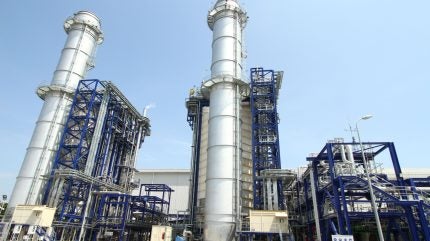
Developers in the US will expand the country’s combined-cycle generating capacity by introducing an additional 18.7GW to the grid by 2028, according to the US Energy Information Administration’s (EIA) preliminary monthly electric generator inventory report.
4.3GW of new capacity is already under construction.

Discover B2B Marketing That Performs
Combine business intelligence and editorial excellence to reach engaged professionals across 36 leading media platforms.
Natural gas-powered electricity generators have been the leading source of electricity in the country since 2016.
Combined-cycle gas turbines (CCGTs), known for their efficiency and flexibility, continue to play an essential role in maintaining grid stability in the US.
These units can quickly adjust output levels in response to fluctuations in demand and supply, which is increasingly important as renewable energy sources become more prevalent within the power mix.
A CCGT has a lifespan of between 25 and 30 years, which can be extended by upgrading, repairing and maintaining the components.

US Tariffs are shifting - will you react or anticipate?
Don’t let policy changes catch you off guard. Stay proactive with real-time data and expert analysis.
By GlobalDataDespite this, only one new CCGT unit was commissioned in 2024 – an addition at Plaquemines liquefied natural gas export terminal, contributing 98MW.
This slowdown reflects a growing emphasis on renewables such as solar, wind power and battery storage systems, spurred by their decreasing costs and supportive federal policies that incentivise green investments.
Developers have scheduled additions totalling 1.6GW of CCGT with completion in 2025 alone.
This includes projects such as the Intermountain Power Project in Utah and Magnolia Power in Louisiana that will feature hydrogen co-firing capabilities, with a 1.5GW combined capacity.
Over half of the expected capacity of 3.3GW that developers plan to commission by 2026 is already being built, while most of the 3.3GW capacity set for commissioning in 2027 has yet to commence construction.
The largest increase could occur in 2028 when another 10.6GW of capacity may be added – the highest amount of CCGT capacity to come online in a single year since 2018.
The developers of all the planned units are navigating regulatory approvals and procuring the necessary equipment, both of which introduce uncertainty regarding their construction costs and the initial operational date.
In February 2025, the EIA projected in its short-term energy outlook that electricity consumption in the US will reach record levels in 2025 and 2026 due to an increase in electricity demand from data centres.



